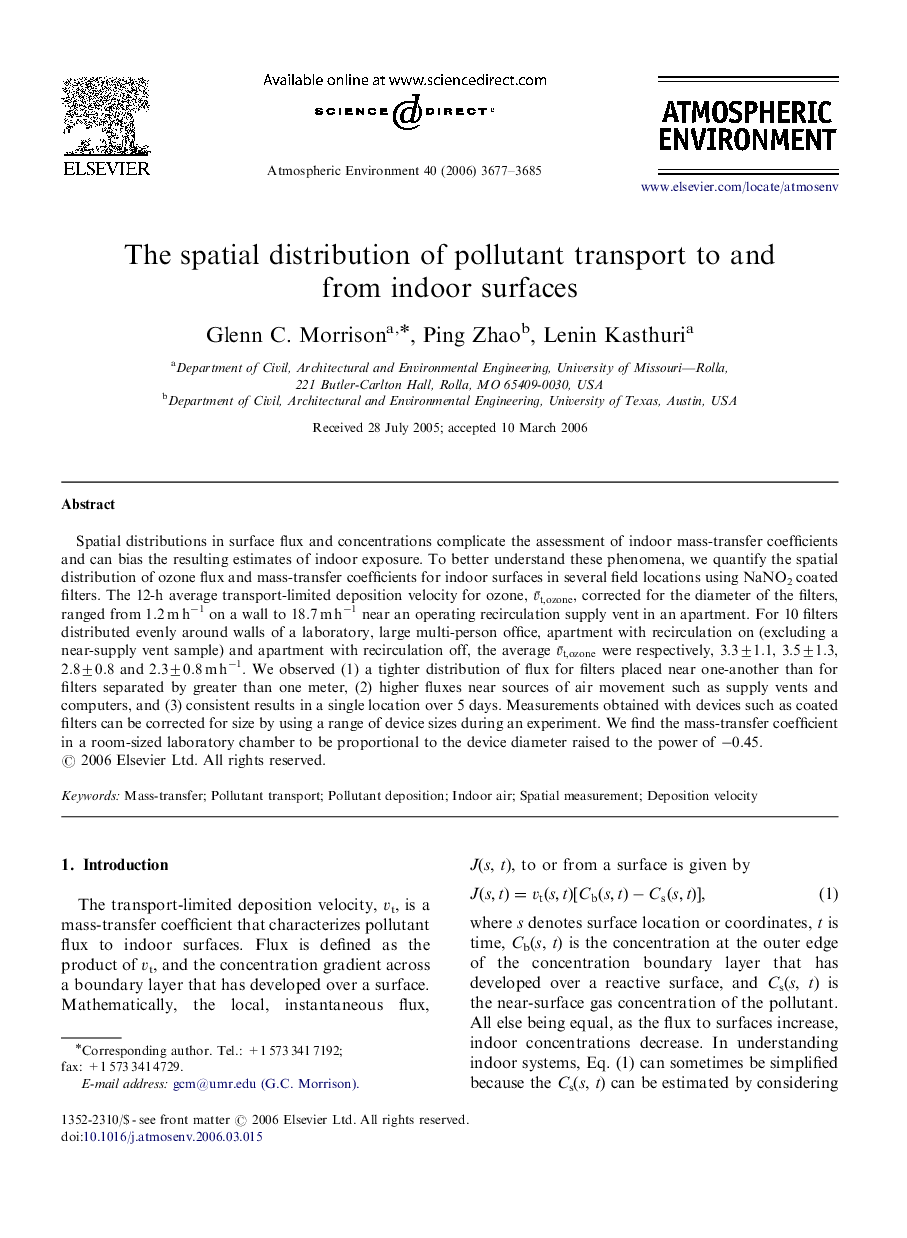| Article ID | Journal | Published Year | Pages | File Type |
|---|---|---|---|---|
| 4444234 | Atmospheric Environment | 2006 | 9 Pages |
Spatial distributions in surface flux and concentrations complicate the assessment of indoor mass-transfer coefficients and can bias the resulting estimates of indoor exposure. To better understand these phenomena, we quantify the spatial distribution of ozone flux and mass-transfer coefficients for indoor surfaces in several field locations using NaNO2 coated filters. The 12-h average transport-limited deposition velocity for ozone, v¯t,ozone, corrected for the diameter of the filters, ranged from 1.2 m h−1 on a wall to 18.7 m h−1 near an operating recirculation supply vent in an apartment. For 10 filters distributed evenly around walls of a laboratory, large multi-person office, apartment with recirculation on (excluding a near-supply vent sample) and apartment with recirculation off, the average v¯t,ozone were respectively, 3.3±1.1, 3.5±1.3, 2.8±0.8 and 2.3±0.8 m h−1. We observed (1) a tighter distribution of flux for filters placed near one-another than for filters separated by greater than one meter, (2) higher fluxes near sources of air movement such as supply vents and computers, and (3) consistent results in a single location over 5 days. Measurements obtained with devices such as coated filters can be corrected for size by using a range of device sizes during an experiment. We find the mass-transfer coefficient in a room-sized laboratory chamber to be proportional to the device diameter raised to the power of −0.45.
